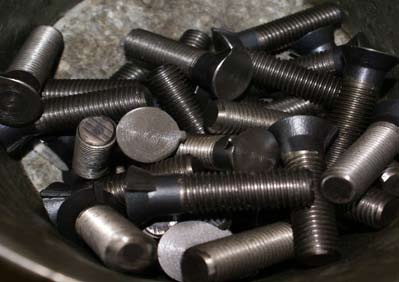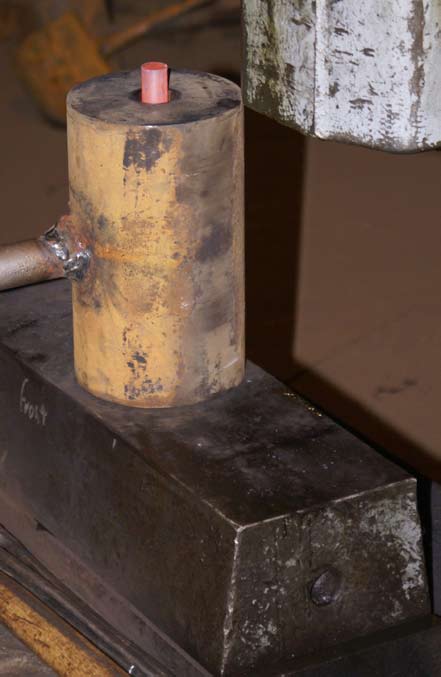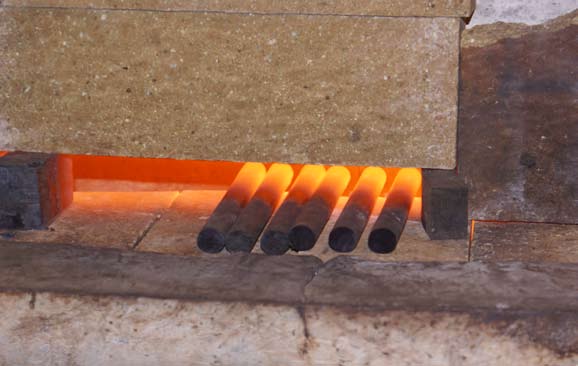Blacksmithing custom-bolts fill unusual need
F
orging is a time-honored process for manufacturing strong, fatigue resistant machine components. Classically, it has been used for manufacturing most things that the safety of life and limb, as well as strength and reliability, depend upon.
Some common examples are airliner landing gears, engine crankshafts and connecting rods, automotive front wheel spindles, ships’ anchor chains, hammerheads, axes, Damascus swords — and on and on. The simplest forging is done by a blacksmith using hand tools. No doubt you have read that “Under the spreading chestnut tree The village smithy stands”. He swings a hammer to forge into shape a piece of red hot steel on an anvil. It’s very hot & heavy work. That’s why he’s doing it outside under that chestnut tree. Modern industries use powered hammers which the smiths control. Many years ago, Acrowood’s predecessors recognized the need for high-strength forged components – especially for bolts that are specially configured to match the requirements of custom-built heavy machinery.

Some could be made of common low carbon steel; but others must be made of high strength alloy steel. The shapes of the heads must match other components such as wood chipper knives, anvils, wear plates, et cetera. Accordingly, a drop forging hammer machine was purchased to produce those special bolts which are not available from traditional bolt makers. Yes, they are pounded into shape when red hot, which assures that the steel fills the mold.
There are no porosities and the grain lines follow the required shape. The result is a better, stronger bolt than could be made by other techniques. All of the current special forged bolt heads have 60-degree included angles. The simplest wear plate bolt head has a plain conical shape that will jam into its countersink and allow tightening a nut at the other end by using only one wrench.
When an accurate and secure location of a chipper disc wear plate is needed, another bolt version has a precisely machined shank that fits tightly into a precisely reamed hole of the same size. These “fitted bolts” are tight enough to require that they be hammered into place at assembly.

For severe duty locations on chipper spouts, another bolt head type has an integral forged key along the cone, which engages a keyway in the mating counter-sink to positively prevent the head from turning. Some would call this a “belt & suspenders” style. The most eye-catching bolt head has the shape of the letter “D” when viewed from the top. That was developed for fastening chipper knives, of the classic face-mounted type, that have tapered slots with rounded ends that the bolt heads engage.

The straight sides of the head engaged against the straight sides of the slot prevent the bolt from turning while its nut is tightened. The rounded side of the head goes against one end of the knife slot when the knife is new and against the other end when the knife is at the end of its useful life. A square-headed bolt would require a longer knife slot. Then, less of the knife width would be available for service or wider knives would be required. The actual history is lost, but someone had their thinking caps on when this was designed. That’s the nuts and bolts of Acrowood: a long history of innovation, even when using old-fashioned methods.

